The Bridge on the River Kwai is a British film of genre Drama directed by David Lean released in USA on 14 december 1957 with William Holden
The Bridge on the River Kwai (1957)

If you like this film, let us know!
Released in USA 14 december 1957
Length 2h41
Directed by David Lean
OriginUnited-kingdom
Themes Seafaring films, Pont, Prison films, Transport films, Rail transport films, Political films, Évasion
Rating80%










The Bridge on the River Kwai is a British 1957 World War II epic film directed by David Lean and starring William Holden, Jack Hawkins, Alec Guinness and Sessue Hayakawa. Based on the novel Le Pont de la Rivière Kwai (1952) by Pierre Boulle, the film is a work of fiction but borrows the construction of the Burma Railway in 1942–43 for its historical setting. The movie was filmed in Ceylon (now known as Sri Lanka). The bridge in the film was located near Kitulgala.
Carl Foreman was the initial screenwriter, but Lean replaced him with Michael Wilson. Both writers had to work in secret, as they were on the Hollywood blacklist. As a result, Boule (who did not even speak English) was credited and "won" the Academy Award for Best Adapted Screenplay; many years later, Foreman and Wilson posthumously received the Academy Award.
The film was widely praised, winning seven Academy Awards (including Best Picture) at the 30th Academy Awards; in 1997 this film was deemed "culturally, historically, or aesthetically significant" and selected for preservation in the National Film Registry by the United States Library of Congress. It is widely considered to be one of the greatest films in history.
Synopsis
In World War II, British prisoners arrive by train at a Japanese prison camp in Burma. The commandant, Colonel Saito (Sessue Hayakawa), informs them that all prisoners, regardless of rank, are to work on the construction of a railway bridge over the River Kwai that will connect Bangkok and Rangoon. The senior British officer, Lieutenant Colonel Nicholson (Alec Guinness), reminds Saito that the Geneva Conventions exempt officers from manual labour.Actors

William Holden
(Cmdr. Shears)

Alec Guinness
(Col. Nicholson)

Jack Hawkins
(Maj. Warden)

Sessue Hayakawa
(Col. Saito)
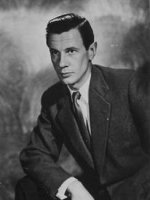
James Donald
(Maj. Clipton)
Comments
Leave comment :
Suggestions of similar film to The Bridge on the River Kwai
There are 263 films with the same actors, 20 films with the same director, 69461 with the same cinematographic genres (including 170 with exactly the same 4 genres than The Bridge on the River Kwai), 14019 films with the same themes (including 0 films with the same 7 themes than The Bridge on the River Kwai), to have finally 70 suggestions of similar films.If you liked The Bridge on the River Kwai, you will probably like those similar films :
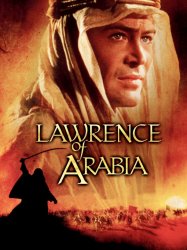
Lawrence of Arabia (1962)
, 3h38Directed by David Lean, Noël Howard
Origin United-kingdom
Genres Drama, War, Biography, Adventure, Historical
Themes Political films, Films based on plays, Le désert
Actors Peter O'Toole, Alec Guinness, Anthony Quinn, Jack Hawkins, Omar Sharif, José Ferrer
Rating82%





Part I In 1935, Lawrence is killed in a motorcycle accident. At his memorial service at St Paul's Cathedral, a reporter tries to gain insights into this remarkable, enigmatic man from those who knew him, with little success.
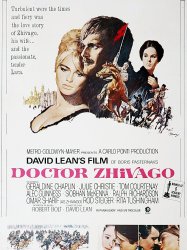
Doctor Zhivago (1965)
, 3h17Directed by David Lean
Origin USA
Genres Drama, War, Historical, Melodrama, Romance
Themes Politique, Films about sexuality, Transport films, Rail transport films, Political films
Actors Omar Sharif, Julie Christie, Geraldine Chaplin, Rod Steiger, Alec Guinness, Tom Courtenay
Rating78%





The film takes place mostly against a backdrop of the pre-World War I years, World War I itself, the Russian Revolution of 1917, and the Russian Civil War. A narrative framing device, set in the late 1940s to early 1950s, involves KGB Lieutenant General Yevgraf Andreyevich Zhivago (Alec Guinness) searching for the daughter of his half brother, Doctor Yuri Andreyevich Zhivago (Omar Sharif), and Larissa ("Lara") Antipova (Julie Christie). Yevgraf believes a young woman, Tanya Komarova (Rita Tushingham), may be his niece and tells her the story of her father's life.

In Which We Serve (1942)
, 1h55Directed by David Lean, Noël Coward
Origin United-kingdom
Genres Drama, War
Themes Seafaring films, Politique, Transport films, La bataille de l'Atlantique, Political films
Actors John Mills, Michael Wilding, Bernard Miles, Noël Coward, Celia Johnson, Philip Friend
Rating71%





The film opens with the narration: "This is the story of a ship" and the images of shipbuilding in a British dockyard. The action then moves forward in time showing the ship, HMS Torrin, engaging German transports in a night-time engagement during the Battle of Crete in 1941. However, when dawn breaks, the destroyer comes under aerial attack from German bombers.

Ryan's Daughter (1970)
, 3h15Directed by David Lean, Charles Frend
Origin United-kingdom
Genres Drama, Comedy-drama, Historical, Melodrama, Romance
Themes Films about terrorism, Political films
Actors Robert Mitchum, Sarah Miles, John Mills, Christopher Jones, Trevor Howard, Leo McKern
Rating73%





Rosy Ryan (Sarah Miles) is on a cliff high above the Atlantic Ocean in the town of Kirrary, an isolated village on the Dingle Peninsula in County Kerry, Ireland. A gust of wind takes her parasol over the cliff and down into the ocean, where it lands next to a currach containing Father Hugh Collins (Trevor Howard) and a mentally impaired man named Michael (John Mills) who retrieves the parasol. On the beach, Michael proudly reunites Rosy with her parasol and shows her an enormous, thrashing lobster that he has caught. The townspeople play a vicious game of Keep Away with Michael and the lobster until Father Collins shames them for their abuse.

The Sound Barrier (1952)
, 1h58Directed by David Lean
Origin United-kingdom
Genres Drama, War, Romance
Themes Transport films, Aviation films
Actors Ralph Richardson, Ann Todd, Nigel Patrick, John Justin, Denholm Elliott, Dinah Sheridan
Rating66%





After his aircraft company's groundbreaking work on jet engine technology in the Second World War, John Ridgefield (Ralph Richardson), its wealthy owner, employs test pilot Tony Garthwaite (Nigel Patrick), a successful wartime fighter pilot to fly new jet-powered aircraft. Garthwaite is hired by Ridgefield after marrying Ridgefield's daughter, Susan (Ann Todd). Tensions between father and daughter are accentuated by Garthwaite's dangerous job of test flying. In a noteworthy illustration of the new technology, Susan accompanies Garthwaite on a ferrying assignment of a two-seater de Havilland Vampire to Cairo, Egypt, returning later the same day as passengers on the de Havilland Comet.
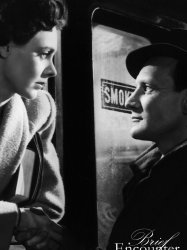
Brief Encounter (1945)
, 1h26Directed by David Lean, George Pollock
Origin United-kingdom
Genres Drama, Romance
Themes Films about sexuality, Théâtre, Transport films, Rail transport films, Films based on plays, Adaptation d'une pièce de théâtre de Noel Coward
Actors Celia Johnson, Trevor Howard, Stanley Holloway, Joyce Carey, Alfie Bass, Sydney Bromley
Rating79%





In the latter months of 1938, Laura Jesson (Celia Johnson), a respectable middle-class British woman in an affectionate but rather dull marriage, tells her story while sitting at home with her husband, imagining that she is confessing her affair to him.

Malta Story (1953)
, 1h43Directed by Brian Desmond Hurst, George Pollock
Origin United-kingdom
Genres Drama, War, Historical, Romance
Themes Seafaring films, Transport films, Aviation films, Political films
Actors Alec Guinness, Jack Hawkins, Anthony Steel, Muriel Pavlow, Renée Asherson, Hugh Burden
Rating64%





In 1942 Britain is trying hard to hold on to Malta while invasion seems imminent; Italians and Germans are regularly bombing the airfields and towns. The RAF fight to survive against the odds using the few fighter aircraft remaining on the island. Flight Lieutenant Peter Ross (Alec Guinness), an archaeologist in civilian life, is on his way to an RAF posting in Egypt but is stranded in Malta due to the air attacks. He is assigned to the RAF squadron there, being an experienced photo reconnaissance pilot.

A Passage to India (1984)
, 2h43Directed by David Lean
Origin United-kingdom
Genres Drama, Adventure, Historical
Themes Films about racism, Théâtre, Films based on plays
Actors Judy Davis, Victor Banerjee, Peggy Ashcroft, James Fox, Alec Guinness, Nigel Havers
Rating72%





The film is set in the 1920s during the period of growing influence of the Indian independence movement in the British Raj. Adela Quested (Judy Davis) and Mrs Moore (Peggy Ashcroft) sail from England to India, where Ronny Heaslop (Nigel Havers), the older woman's son and younger woman's fiancé, is the magistrate in the provincial town of Chandrapore. Through school superintendent Richard Fielding (James Fox), the two visitors meet eccentric elderly Brahmin scholar Professor Godbole (Alec Guinness), and they befriend Dr Aziz Ahmed (Victor Banerjee), an impoverished widower who initially meets Mrs Moore in a moonlit mosque overlooking the Ganges River. Their sensitivity and unprejudiced attitude toward native Indians endears them to him. When Mrs Moore and Adela express an interest in seeing the "real" India, as opposed to the Anglicised environment of cricket, polo, and afternoon tea the British expatriates created for themselves, Aziz offers to host an excursion to the remote Marabar Caves.

The Great Escape (1963)
, 2h45Directed by John Sturges, John Flynn
Origin USA
Genres Drama, War, Thriller, Action, Adventure, Historical
Themes Prison films, Transport films, Aviation films, Motocyclette, Political films, Évasion, Disaster films, Films about aviation accidents or incidents, United States Armed Forces in films
Actors Steve McQueen, James Garner, Richard Attenborough, James Donald, Charles Bronson, Donald Pleasence
Rating81%





In 1943, having expended enormous resources on recapturing escaped Allied prisoners of war (POWs), the Germans move the most determined to a new, high-security prisoner of war camp. The commandant, Luftwaffe Colonel von Luger (Hannes Messemer), tells the senior British officer, Group Captain Ramsey (James Donald), "There will be no escapes from this camp." Von Luger points out the various features of the new camp designed to prevent escape, as well as the perks the prisoners will receive as an incentive not to try. After several failed escape attempts on the first day, the POWs settle into life at the prison camp.
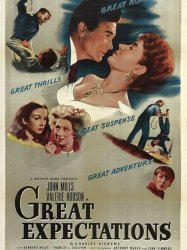
Great Expectations (1946)
, 1h58Directed by David Lean, George Pollock
Origin United-kingdom
Genres Drama, Historical, Romance
Themes Films about children
Actors John Mills, Jean Simmons, Valerie Hobson, Alec Guinness, Martita Hunt, Finlay Currie
Rating77%





Orphan Phillip "Pip" Pirrip (Anthony Wager) lives with his shrewish older sister and her kind-hearted blacksmith husband, Joe Gargery (Bernard Miles). One day, Pip runs into an escaped convict, Abel Magwitch (Finlay Currie), who intimidates the boy into getting him some food and a file for his chains. Magwitch is caught when he attacks a hated fellow escapee, and is taken back to the prison ship.
 Connection
Connection